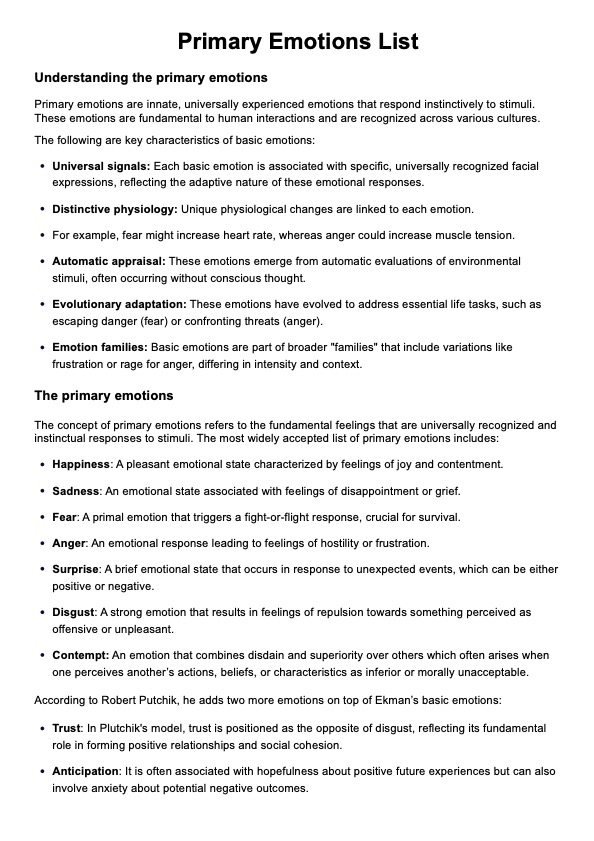The six primary emotions identified by psychologist Paul Ekman are happiness, sadness, fear, disgust, anger, and surprise. Contempt is later accepted as the seventh one (which is still met with some criticism). These are universal emotions recognized across all cultures due to their instinctual and biological basis.

Primary Emotions List
Explore and download Carepatron's free Primary Emotions List PDF here. Understand the different emotions and how they manifest in our daily lives.
Primary Emotions List Template
Commonly asked questions
Secondary emotions are more complex feelings that arise from the cognitive appraisal of primary emotional reactions, such as guilt, shame, pride, and jealousy. These emotions are influenced by an individual’s past experiences, social norms, and personal values.
Yes, primary and secondary emotions are closely correlated. Secondary emotions often develop as a reaction to the primary emotions felt in response to a stimulus. Understanding this relationship is crucial for effectively managing emotional responses in therapeutic settings.
EHR and practice management software
Get started for free
*No credit card required
Free
$0/usd
Unlimited clients
Telehealth
1GB of storage
Client portal text
Automated billing and online payments











